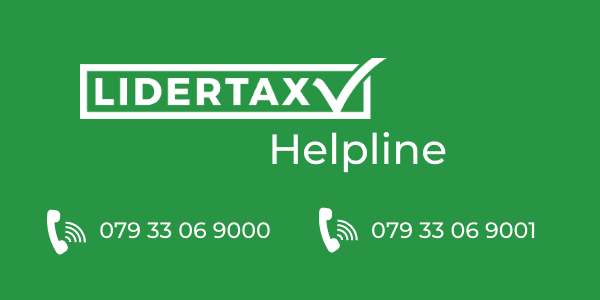
Have you ever wondered about what P11d forms are, when they’re needed, and what Benefits in Kind are? We’ll be covering all of these key topics today to help you find out a little more about how these systems work and what they might mean for you and your business.
What is a P11d Form?
First of all, we need to define what a P11d form is and how it applies to your business. Employers complete a P11d form to detail the benefits provided to their clients throughout the year.
While existing payroll agreements already cover many benefits, non-covered benefits can be submitted through the P11d form. This is because benefits in kind still hold some form of value despite not being direct financial payments to the employee. For example, an interest-free loan on the cost of travel (e.g. a train ticket) that doesn’t directly benefit the business may be considered as a benefit in kind, and this will have a set value (the price of the ticket).
Due to holding this value, even though the benefit in kind isn’t directly financial in nature, it is still important for businesses to pay taxes on any assigned benefits in kind. As such, the benefit in kind tax value is determined by the value of the items.
Notably, P11d benefit in kind payments does not apply to any benefits applied through payroll. As such, payroll benefits offer the bonus of being much easier to manage for the business without the hassle of extensive end-of-year administration. However, payroll benefits have less freedom for the business overall since they are usually included as part of the contracted terms of employment.
What is a P11d Benefits in Kind Form?
Many assume there is a difference between P11d forms and Benefit in Kind forms. However, these are one in the same thing. This can be a little tricky to wrap your head around, to begin with; as such, if you’re worried, getting professional support from a tax advisory service like our team here at LiderTax could be valuable.
With that being said, there is a difference between P11d forms and P11d (b) forms. While a P11d form is an individual form that’s provided on a per-employee basis, showing the financial equivalent of their benefit in kind for the year, the P11d (b) form is focused on the employer. In other words, the P11d (b) form outlines the total taxable benefits paid by the company to its employees over the tax year.
How are Benefits in Kind Reported?
You will need to complete four sections to a P11d benefits in kind form. These are as follows.
#1 Class 1A National Insurance
The first part of the P11d submission is Section 1, where you’ll need to return your annual Class 1A National Insurance contributions.
#2 Declaration
The second section in the P11d is the declaration. This affirms the return of Class 1A national insurance and any associated benefits, expenses, and contributions.
#3 Information
The third part of the P11d submission form is an information section, which details everything you will need to know about completing the form. Read this section thoroughly before proceeding with the P11d submission, as it will significantly help you complete the P11d.
#4 Adjustments
If you need to apply any adjustments to the total benefits liable to Class 1A, you will need to outline these in the fourth section of the benefit in kind form. This section is dedicated to adjustments for such National Insurance contributions.
What are Examples of Benefits in Kind?
Not every bonus provided to an employee will necessarily be counted as a benefit in kind. The easiest way to think about this is to define a benefit in kind as something that the employer pays for that the employee can benefit from directly and personally.
In other words, an investment that benefits the entire team (e.g. a new games console in the staff restroom) is unlikely to be a benefit in kind. However, if an employee was rewarded with said games console as a benefit for their work, this may be a benefit in kind.
Some common examples of benefits in kind for businesses include the following:
- Company mobile phones and contracts
- A company car or vehicle
- Memberships to gyms or clubs
- Healthcare schemes and insurance plans
- Accommodation (potentially)
- Free meals or meal vouchers
This is not anywhere near an exhaustive list and is just an outline of some common benefits in kind. If you have any further questions about what classes are beneficial, please don’t hesitate to contact our experts for further guidance and help.
How to Complete P11d ad P11d Benefits in Kind Forms
Luckily, completing P11d benefit in kind forms is a very simple process. A P11d benefit in kind form runs between the normal tax year of the 6th of April and the 5th of April. Notably, since benefits in kind are considered part of the employee’s pay for tax purposes, the value of a benefit in kind is charged at a tax rate of 13.8%.
The employer completes the P11d and the P11d (b) tax forms directly unless the worker is self-employed. Many new businesses miss this point since they assume the employee will have to complete their section; don’t fall into this trap.
The benefit in kind tax form needs to be filed by the 22nd of July. Late payments may incur fines for the business, so it is very important that you take steps to ensure that you make all payments on time to avoid getting fined.
Final Thoughts
If you have been wondering whether you need to submit a P11d form or a P11d benefits in kind, hopefully, today’s guide will have helped. Indeed, submitting a P11d Benefit in Kind form is surprisingly easy. However, you will still need to ensure that these are completed accurately before submitting them, to be sure; with this thought in mind, if you’re feeling unsure, make sure that you reach out to an expert team such as ours here at Lidertax to see how we could help make submitting your own P11d forms a little bit easier.




